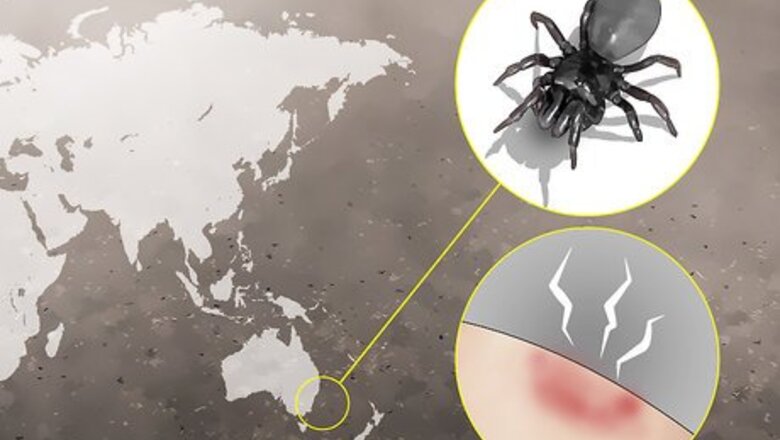
views
Identifying the Spider Bite
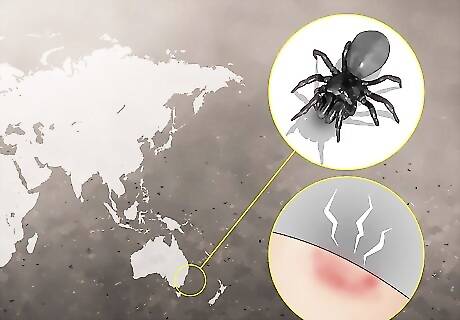
Look for a Sydney funnel web spider’s tarantula-like body. The highly aggressive Sydney funnel web spider resembles a glossy tarantula and is found in dark, moist environments in South-Eastern Australia. A bite requires immediate professional medical attention since these spiders have a dangerous bite and symptoms will set in quickly. Initially the intensely painful bite will show little inflammation or blistering, but the person will sweat, have facial twitches, and may feel tingling around the mouth. Anti-venom does exist, and should be administered at a hospital as soon as possible.
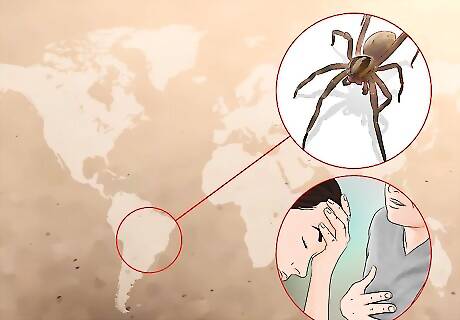
Notice the Brazilian wandering spider’s large, hairy body. Brazilian wandering spiders are large, aggressive nocturnal spiders found in South America. They are usually are brown and hairy, with a 2 in (5.1 cm) long body and a black marking on the belly. Wandering spiders build no webs, roam at night, and can be found in banana clusters or hiding in dark environments. Their bites produce localized swelling and pain that radiates toward the torso, and may be accompanied by symptoms of nausea, vomiting, hypertension, breathing difficulties and, in males, an erection. Anti-venoms exist to help relieve symptoms, and deaths are rare.
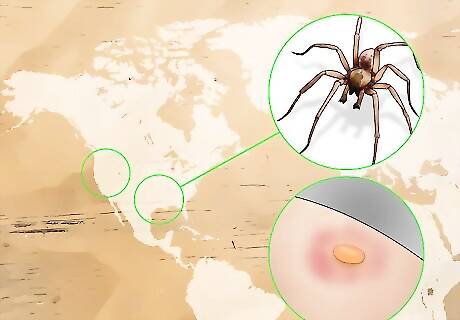
Look for a fluid-filled blister to indicate a brown recluse bite. Brown recluse spiders can be many different shades of brown, but they have a violin-shaped marking on their back and long, spindly legs. Their bite initially stings, then deepens into intense pain over the next 8 hours. A fluid-filled blister that turns into a steadily enlarging open sore appears, and permanent tissue damage is preceded by a blue and red “target sign” around the wound site. Other symptoms include a fever, rash, and nausea. Brown recluse spider bites can produce scarring, but have caused no deaths in the United States. There is no anti-venom, but treatments of bite lesions exist via surgery and antibiotics. If you get a brown recluse bite, see a doctor. They might prescribe antibiotics and antihistamines to prevent infections and control itching and discomfort. You’ll also need a tetanus booster if you haven’t had one recently. If the bite is especially deep or infected, you might need surgery or more advanced wound care to help it heal properly.
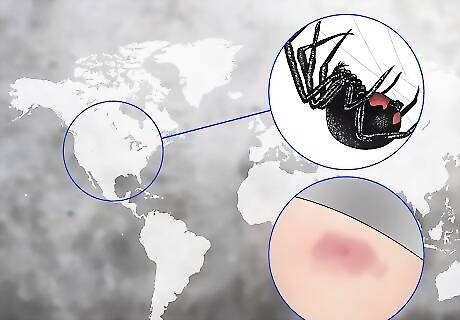
Keep an eye out for the red hourglass marking on a black widow. Black widows are large, glossy black spiders with a red hourglass shape on their belly. They are found throughout North America. The bite may feel like a pinprick, and the site of the bite will be slightly red and swollen. Within 30 minutes to a few hours, however, intense pain and stiffness will begin. Severe abdominal pain, nausea, fever or chills may develop. Black widow bites are generally not fatal to healthy adults because a vaccine is usually readily available. However, if left untreated, people can lose limbs. Black widows and brown recluses are the only 2 types of dangerously poisonous spiders in the U.S. They both reside in warm climates and prefer dark, dry places like closets and wood piles.
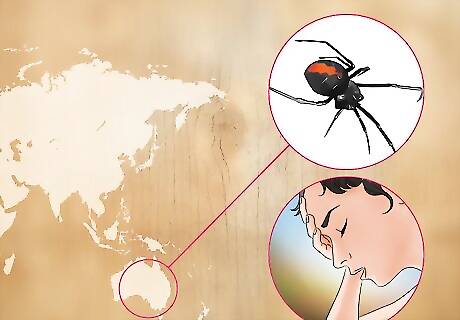
Take note of the redback spider’s red abdominal stripe. Closely related to black widows, redbacks are found all over Australia, particularly in urban areas. Only female redback spiders are dangerous. These have a black (sometimes brownish) pea-sized body with a red stripe on the upper abdomen and an hourglass-shaped reddish orange marking on the underside of the abdomen. A redback bite will produce sweating, vomiting, nausea, muscular weakness, and pain, which may be excruciating. Since the invention of redback anti-venom, no deaths have occurred as a result of a redback bite.
Taking Immediate Action
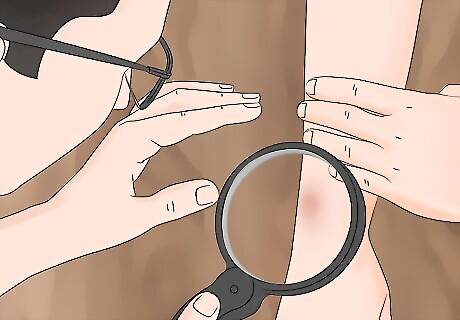
Get immediate medical care. See a medical professional immediately for treatment, even if you think the bite isn’t serious. After all, it’s easy to incorrectly identify a spider bite. Go to the emergency room or call emergency services if you have signs of a severe reaction, such as severe itching, spreading redness around the bite, dizziness, wheezing, difficulty breathing, nausea and vomiting, or swelling of your face, lips, tongue, or throat. If you have signs of a severe reaction or anaphylactic shock, use an epi-pen immediately if you have one. If you don’t have your own epi-pen, emergency personnel will likely give you an epinephrine injection followed by antihistamines. It’s a good idea to get a large antihistamine injection as soon as you can, even if you don’t know the type of spider bite. While anti-venom is available in most ambulances, it might be a little while before the proper one can be selected and administered.
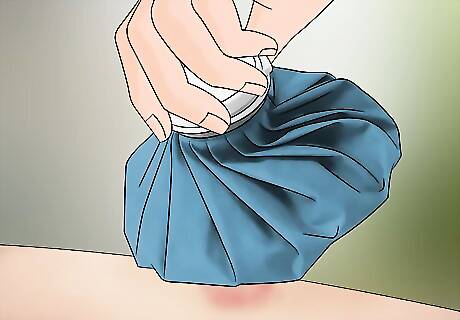
Apply an ice pack to reduce inflammation. This will help slow the spread of the venom and bring down the pain and swelling. To prevent tissue damage, don’t leave the ice on your skin for more than 10 minutes at a time. Reapply the ice pack every 1-2 hours. If you believe the bite is from a Brazilian wandering spider, apply a warm compress. This will help reduce blood pressure in the area.
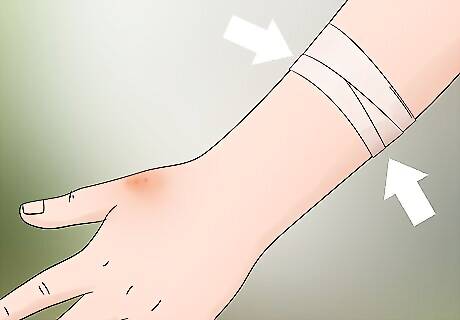
Slow the venom's spread with elevation and compression. If the bite is on an arm or a leg, elevate the limb. You can also wrap a bandage firmly around your limb above the bite. Move as little as possible to slow the spread of the venom. Be careful not to cut off circulation when tying the bandage. If you believe you are dealing with a redback bite, don’t tie a bandage around the area. Redback venom spreads slowly, so the bandage won’t do much except worsen the pain.

Bring the spider with you to the medical facility, if you can. Even if the spider is squashed, try to save it and bring it with you to the medical facility. Blood tests can reveal the type of spider bite, but having the specimen can speed up the identification and treatment process. Rubbing alcohol can be used to preserve a spider.
Treating a Non-Dangerous Bite at Home

Wash the bite area with cool soapy water. Even if you believe the bite isn’t serious, it’s a good idea to have it examined by a medical professional. If they have determined it is non-dangerous, start by cleaning the wound with soapy water to help prevent infection.
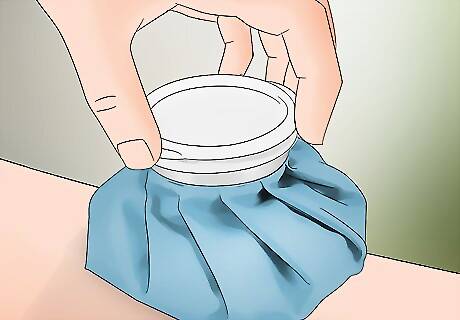
Apply a cool compress, such as an ice pack, for 10 minutes at a time. This will ease the pain of the bite and help the swelling go down for 20 to 30 min. To prevent tissue damage, don’t leave the ice pack on for more than 10 minutes at a time. To keep the swelling down, re-apply the ice every 1-2 hours.
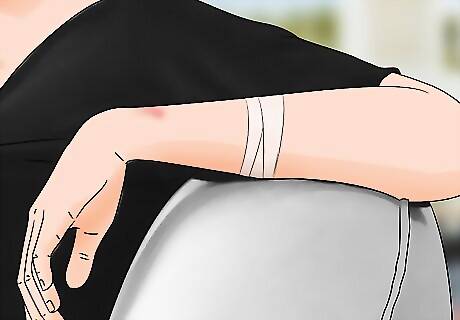
Elevate bitten extremities to bring down swelling. If you have a spider bite on your arm or leg, keep the limb elevated as much as possible. This is helpful for reducing inflammation and swelling. For example, if you’ve been bitten on the leg, lie down and prop it on a pillow or the arm of a couch.
Take oral antihistamines to relieve itching and swelling. Spider bites can be very itchy. If you’re experiencing a lot of itching and inflammation, try an over-the-counter antihistamine, like Benadryl or Chlor-Trimeton. Antihistamines can make you drowsy, so be careful taking them before driving or using heavy machinery. Always follow the dosage directions on the package. If you’re not sure how much to take, ask your doctor or pharmacist.
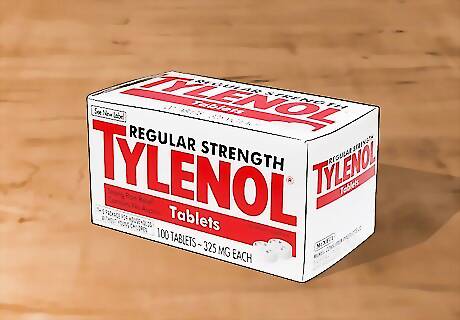
Relieve minor symptoms of pain and swelling with NSAIDs or acetaminophen (Tylenol). If the bite is inflamed or painful, over-the-counter painkillers can help. Non-steroidal anti-inflammatory drugs like ibuprofen (Motrin), naproxen (Aleve), or aspirin will relieve both swelling and pain. You can also take acetaminophen (Tylenol) for pain, but it won’t help with swelling. Children or teenagers recovering from chickenpox or who have flu-like symptoms should not take aspirin.
Apply a topical steroid cream for 1-2 days to reduce itching. Steroid creams can help calm itching and inflammation at the site of the bite. Use a cream such as triamcinolone acetamide 0.05% or 1% hydrocortisone cream. Always follow the directions on the package or get advice from your doctor or pharmacist about how often to apply the cream.
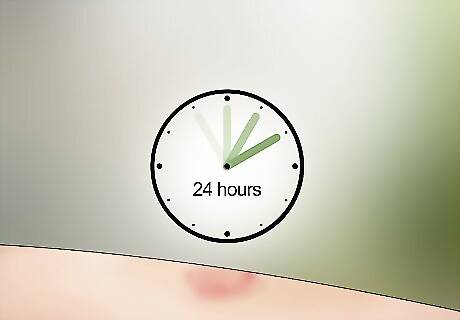
Monitor the bite for the next 24 hours to ensure symptoms don't worsen. Within a few days, the swelling should go down and the bitten area should feel less painful. Call your doctor if symptoms don't improve. If your bite is just the size of a quarter, keep an eye on it. However, if it spreads in a stripy pattern around the area, producing redness and swelling, see a doctor right away.
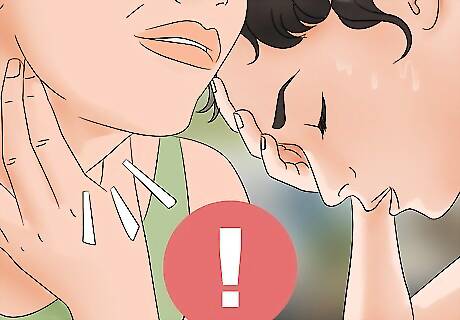
See your doctor if you have an allergic reaction. In some cases, a bite from a normally non-dangerous spider can cause an allergic reaction. Call emergency medical services immediately if the person with the spider bite has the following symptoms: Difficulty breathing Wheezing Nausea Muscle spasms A stripy pattern spreading from the bite area Tightening in the throat that makes it hard to swallow Sweating profusely Feeling faint
Follow up with your doctor if you see signs of infection. Most of the time, spider bites heal up on their own with self-care. However, if you the bite doesn’t start getting better in a few days, or if you notice it getting worse, call your doctor. They may need to do more intensive wound care or treat you for an infection. Look out for symptoms such as: An open sore or blackened or discolored skin around the bite A fever or a general feeling of being unwell Worsening pain, swelling, redness, or warmth around the bite Pus or other discharge from the bite Red streaks radiating away from the bite



















Comments
0 comment